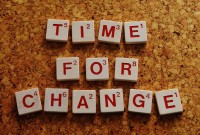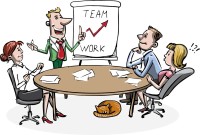- Home
- Business Processes
- Industry Knowledge
- Aerospace Industry
- Automotive Industry
- Banking Domain
- BFSI Industry
- Consumer/ FMCG Industry
- Chemicals Industry
- Engineering & Construction
- Energy Industry
- Education Domain
- Finance Domain
- Hospitality Domain
- Healthcare Industry
- Insurance Domain
- Retail Industry
- Travel and Tourism Domain
- Telecom Industry
- Leadership Skills
- eLearning
- Home
- Domain Knowledge
- Creativity Tools
- Investment Theory of Creativity
Investment Theory of Creativity
Sternberg in the year 2006, proposed the investment and confluence theory focused on understanding creativity. According to the investment theory, creativity requires a confluence of six distinct but interrelated resources known as intellectual abilities, knowledge, styles of thinking, personality, motivation, and environment. It emphasizes that creativity is not about one thing, but about a system of things.
Resources Required for Fostering Creativity
There are different theories to understand or explain creativity. According to the Investment Theory of Creativity; creativity is a decision in the same way investing is. People are not born creative or uncreative. Rather, they develop a set of attitudes toward life that characterize those who are willing to go their own way. Creativity comprises several different aspects: (a) abilities, (b) knowledge, (c) styles of thinking, (d) personality attributes, (e) motivation, and especially intrinsic motivation, and (f) environment.
1. Intellectual skills:
Every child is an artist. The problem is how to remain an artist once he grows up. –Pablo Picasso
Three intellectual skills are particularly important namely synthetic skill, analytical skill, and practical-contextual skill. The confluence of these three skills is also important. If your team lacks these vital skills or expertise, you should look outside your group to find what you need. What matters is not only the skill to conceive new ideas, to inspect problems in novel ways, but also the skill to present it and persuade others to adopt it.
2. Knowledge:
It requires a very unusual mind to undertake the obvious. - Alfred North Whitehead
One needs to have expertise in a field to move it forward. Knowledge about a field can also result in a closed and entrenched perspective, resulting in a person's not moving beyond the way in which he or she has seen problems in the past. Knowledge thus can help, or it can hinder creativity. In the group, you should look for a balance of expertise and personal characteristics in each new hire. Look for people who are able and willing to work across functional boundaries. When you set specific hiring criteria, put a premium on increasing your group's intellectual diversity and finding the necessary skills that the group currently lacks. Don't simply list a standard set of skills. There is a delicate balance here, we should be aware of the work done so far to solve a problem, at the same time we must not occupy ourselves with them so much so that we lose the ability to think out-of-the-box, that we become preoccupied or biased by the existing proposed solutions.
3. Thinking styles:
When all men think alike, no one thinks very much. - Walter Lippmann
Is your group composed of people with similar thinking styles and skills? Thinking styles are preferred ways of using one's skills. In essence, they are decisions about how to deploy the skills available to a person. Diverse groups think more creatively and are more likely to generate innovative solutions. Are there people with different thinking styles or skills in your organization who could temporarily take part in the work of your team? You might also want to offer training to encourage team members to question each other's assumptions and to listen to each other’s' points of view. Also, if you have the opportunity to hire more team members, look for people whose intellectual perspectives complement your existing team's preferred styles and skills.
4. Personality:
The world is but a canvas to the imagination. –Henry David Thoreau
This could be summarized as a conviction in one’s thoughts. A willingness to find a middle ground, reconcile conflicts, present the ideas most convincingly to the most adverse audience, not getting dazed by rejection but making incremental efforts to find a breakthrough. Numerous research investigations have supported the importance of certain personality attributes for creative functioning. These attributes include risk-taking ability, work under ambiguity, and self-efficacy. One has to be willing to stand up to conventions if one wants to think and act in creative ways. There are many different ways to describe how people think and make decisions. For the purposes of ensuring that your group has all the characteristics necessary for creative work, what's most important is that you develop the ability to recognize and describe different thinking styles.
5. Motivation:
Creativity involves breaking out of established patterns in order to look at things in a different way. - Edward de Bono
A person should be self-motivated to be truly creative in finding a solution. The environment can be motivating but what truly differentiates creative investment is intrinsic task-focused motivation. People rarely do truly creative work in an area unless they really love what they are doing and focus on the work rather than the potential rewards. Motivation is not something inherent in a person: One decides to be motivated by one thing or another. Creativity will not flourish without a reward system that encourages individuals to stretch their ideas, to try totally new approaches, and to push beyond the bounds of normal work processes. Creative energy is a limited resource and must be replenished—not just at the end of the creative process, but throughout the project's life cycle. An exhausted or discouraged group cannot maintain their creativity. Rewards serve to rejuvenate and refresh creative energy.
6. Environment:
The workplace itself is alive with the unexpected; when employees interact with it, it yields provocations no one can possibly expect. - Alan Robinson and Sam Stern
Physical surroundings can have an enormous impact on creativity. When an environment is filled with many types of stimuli, it sends the message "think differently." It encourages people to make new connections and to think more broadly. One needs an environment that is supportive and rewarding of creative ideas. One could have all of the internal resources needed to think creatively, but without some environmental support, the creativity that a person has within him or her might never be displayed. Truly creative environments are notable for the variety of art, toys, and reading material they contain. Encouraging a playful attitude is especially important because it helps people fully express their individuality and so enhances the quality of the group's creative output.
The confluence of Six Components of Creativity
Concerning the confluence of these six components, creativity is hypothesized to involve more than a simple sum of a person's level on each component.
- There may be thresholds for some components (e.g., knowledge) below which creativity is not possible regardless of the levels of other components.
- Partial compensation may occur in which strength on one component (e.g., motivation) counteracts a weakness on another component (e.g., environment).
- Interactions may occur between components, such as intelligence and motivation, in which high levels on both components could multiplicatively enhance creativity.
Related Links
You May Also Like
-
Change & Culture of Innovation
Predicting the future is a tricky business but managers need to have a future perspective in order to take business advantage and remain competitive. They need to drive and introduce constructive change to the business of the enterprise. The first step to creativity and innovation is to drive a culture of Innovation. Managers need to focus on developing future mindset all the time to keep pace with the unfolding future.
-
Investment Theory of Creativity
Sternberg in the year 2006, proposed the investment and confluence theory focused on understanding creativity. According to the investment theory, creativity requires a confluence of six distinct but interrelated resources known as intellectual abilities, knowledge, styles of thinking, personality, motivation, and environment. It emphasizes that creativity is not about one thing, but about a system of things.
-
The best career choices are ones that match your values. Each person has several values that are important to him. These values are highly personal and knowing them provides a clearer sense of what's most important to you in your life and career. Career values are the beliefs you consider important from a work standpoint. Values help you understand what you want from a job? Explore a few examples of work values that can influence career path and job satisfaction.
-
A manager or an employee in an organization who is experiencing a high level of stress may develop high blood pressure, ulcers, irritability, difficulty in making routine decisions, loss of appetite, accident proneness, and the like. These can be subsumed under three general categories, physiological, psychological, and behavioral symptoms. Stress can give rise to a number of changes.
-
In our present Hitech scenario, society is changing very fast. What are the skills that are most relevant for leaders in relation to the changing economic environment? Leaders need to develop skills to drive innovation and change in order to play a more central role in their organizations’ activities. How do managers accept the change and meet business expectations by becoming a key figure in driving change and innovation?
-
At different points in your professional career, it is helpful to identify your core values. Values are the qualities considered to be the most important guiding principles that determine the priorities in your life and greatly influence your career choices. Your career brings happiness when it is in agreement with the beliefs you have about what is important and meaningful to you. Awareness of your values will help you develop a clearer sense of what's most important to you in life.
-
Building Perfect Creative Team
One misconception around creativity is that creative act is essentially solitary. Most of the world's important inventions resulted not from the work of one lone genius, but from collaboration of a team with complementary skills. Managers should build teams with the ideal mix of traits to form a creative group and then establish the conditions that make creativity much more likely to occur.
-
Collaborative leadership is all about collaborative problem-solving and decision-making or can also be defined as the leadership of a collaborative effort. . The term started to appear in the mid-1990s in response to the formation of long term public-private partnerships to rebuild public infrastructure. Learn how you can use principles of collaborative leadership to enhance your leadership skills for being an effective leader.
-
Thinking & Problem Solving Skills
Today's dynamic business world demands that you make decisions that significantly boost productivity and drive competitive advantage. But how do you know whether a decision will benefit the organization? And how do you know that the decisions are based on rational and statistical reasoning? Explore how to become a dynamic problem solver with the skills to make accurate decisions.
-
Generating Ideas using Brainstorming
The brainstorming technique was developed by Alex F. Osborn in 1957 and brainstorming means where a team of members generates a large amount of alternative fruitful ideas on a specific problem without any criticism and then evaluates each idea in terms of their pros and cons. Brainstorming techniques fall into four broad categories: visioning, exploring, modifying, and experimenting.
Explore Our Free Training Articles or
Sign Up to Start With Our eLearning Courses

About Us
Learning
© 2023 TechnoFunc, All Rights Reserved










